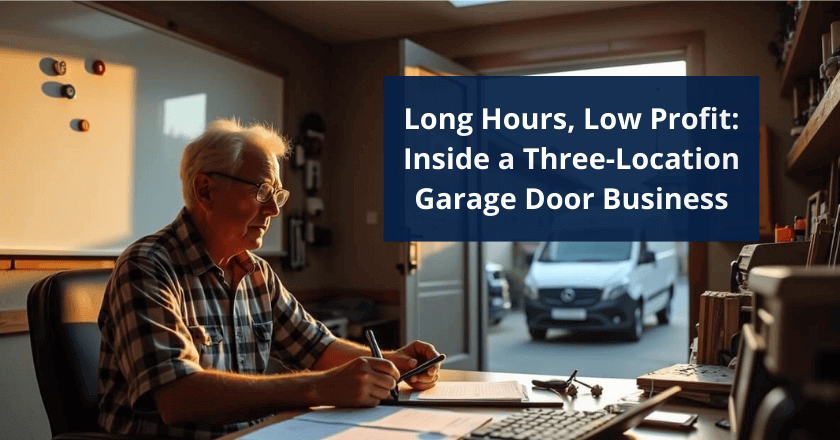Long Hours, Low Profit: Inside a Three-Location Garage Door Business
Sep 15, 2025 4:52 pm
Since becoming a business broker, I've had many difficult conversations. The one that I'm going to share is recent, but I feel like I've had the same conversation dozens of times.
Earlier this month, I met with the owner of a garage door company with three locations (I'll call him Bob to preserve anonymity).
Bob and his wife easily work more than a combined 80 hours a week. One location is closing because it has been losing money for multiple years. I don't think he fully understood the negative impact the location had on the value of the business, as well as the negative effect on his personal income.
Bob told me about an old unsolicited offer of around $500,000. He'd been trying to sell the business for over a year and even floated $250,000 to a trusted employee. That had just fallen through.
I reviewed his P&Ls in-depth starting in 2022 and continued through a partial 2025. The best year was 2023, with a total owner benefit of around $120,000. The other years had very little to show. The 2024 taxes were still unfinished, but the owner benefit was essentially $0, and 2025 is on pace to be a loss. The financial data was disorganized, and we could not tell which location made money and which one burned it.
Bob's wife receives a salary. We couldn't consider that in the cash flow, as she
would need to be replaced by a new hire. When a buyer evaluates a business, they look at what the company itself produces, ask what it costs to run, and whether there is enough left to make a living and service debt.
My best estimate is that the value today looks closer to $100,000 to $150,000, and that's only because they have a few commercial contracts in place that a buyer could build on. It's possible that a buyer would be willing to put $25,000 down with the balance in seller financing.
Bob did not like my estimate, and I could hear the frustration in his voice. I understand why. He has put years into this. Unfortunately, hours worked do not equal enterprise value. Verifiable, transferable profit does.
I share this story because many owners are in the same position without realizing it. If you are not reviewing current numbers, if you cannot see profit by location or by service type, you can end up with a business that feels valuable but will not price that way.
What Could Have Changed This Outcome
Here's what Bob could have done differently to be in a stronger position when it came time to sell:
Maintained current financial records.
Had he filed tax returns on time and closed books monthly, we could have quickly identified which locations were profitable. Instead, incomplete 2024 returns and missing location-level data left us guessing about the business fundamentals.
Tracked profitability by location and service type.
If Bob had created separate P&Ls for each location years ago, the losing site could have been fixed or closed before it drained resources from profitable operations. He also could have shown buyers exactly which services were the most profitable.
Built operational systems earlier.
Working 40+ hours per week with his spouse signals a business dependent on the owners. Documented processes and management development would have increased the value of the business.
Monitored key performance metrics.
Without data on margins by service type, labor efficiency, or customer concentration, he had no roadmap for improving profitability or demonstrating value to buyers.
Evaluate the value of your business every year.
It will help you plan more effectively and understand your personal financial implications when it's time to exit your business.
The lesson is clear: start building these systems at least 2-3 years before you plan to sell. This owner's decades of hard work deserved a better outcome, but buyers can only pay for verifiable, transferable profit.


